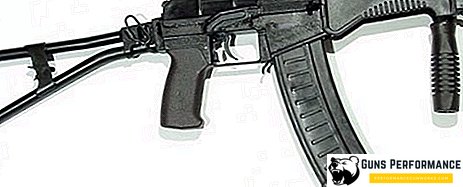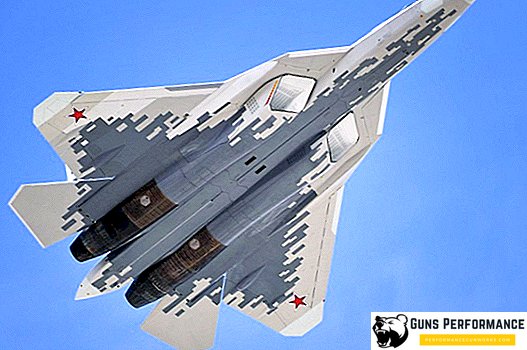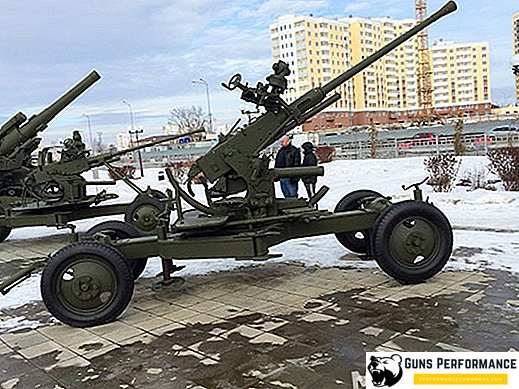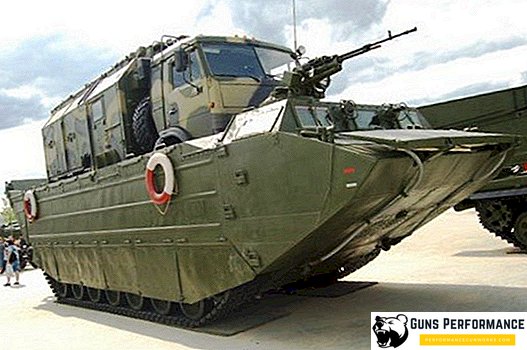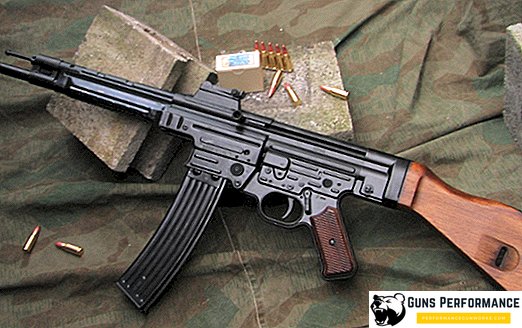A characteristic feature of a weapon made in the Soviet Union is often its simplicity and high manufacturability. As a rule, these properties were complemented by high reliability and practical efficiency. This is especially true for weapons of war. But even against this background, the Sudayev submachine gun, created in 1942, stands out for its brevity and genuinely Spartan simplicity. However, experts believe that the PPS-42 and PPS-43 are the best submachine guns of the Second World War.
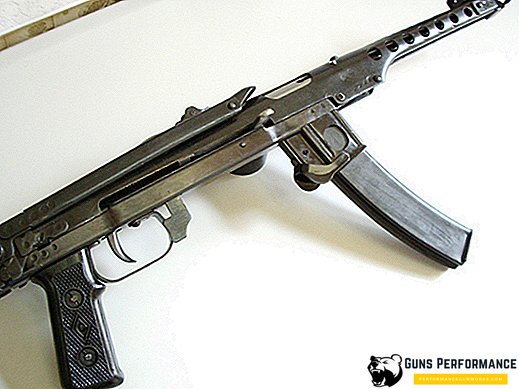
History of creation
The first submachine guns appeared during the First World War. The idea was quite simple: equip the advancing infantry with light and cheap automatic weapons. The usual machine gun, created under the rifle cartridge, was an ideal defensive means, but it had large dimensions, so it could not quickly follow the advancing troops. The submachine gun using the pistol cartridge had a small mass and high rate of fire, which significantly increased the firepower of the infantry units.
Work on the creation of new systems of submachine guns continued after the First World War. In those years, two concepts of using such weapons were considered. According to the first of them, the submachine gun was supposed to perform the functions of an ordinary machine gun, and to support the troops (especially in the offensive). Such a lightweight version of a conventional machine gun. Such weapons are often equipped with a long barrel, folding bipod, sighting devices, allowing to fire at several hundred meters. A typical example of a similar submachine gun is the Finnish Suomi, whom the Red Army soldiers met during the Finnish War.

In another opinion, the submachine gun was a purely auxiliary weapon, which was supposed to replace the pistols of officers, tank crews, servicemen of auxiliary units. In the USSR, generals did not complain too much about submachine guns, considering them to be police weapons. Opinion changed after the Finnish War and the effective use of the Suomi submachine gun by the Finns.
In the USSR, developments in this direction have been going on since the end of the 20s. They attracted the best weapons designers of the country. Ammunition for the future submachine gun chose a relatively powerful cartridge 7.63 × 25 Mauser. As a result, a submachine gun of the Degtyarev system, called PPD, was adopted.
This weapon began to be mass-produced, albeit in small batches. The situation changed after the Finnish War: a competition was announced for the creation of a new weapon of this class, taking into account the experience of real hostilities. The designers were given the task to make the machine no worse than the RPD, but it is simpler and cheaper than it.
The arms designer Shpagin coped with the task best of all, it was his creation that was put into service and was given the name PPSH-41. This machine gun in mass consciousness has become a real symbol of the Great Patriotic War and Victory.

Very quickly, mass production of these weapons was launched in the country. But PPSH-41 had many flaws that could not be eliminated by its modernization. He was especially displeased with scouts, tankers, saboteurs, and signalmen: for them he was too massive and heavy. In addition, the country's leadership wanted to get even more simple and cheap machine.
In 1942, a new competition began. The participants were given the task: to make a submachine gun with tactical and technical characteristics no worse than that of PPSh-41, but with smaller dimensions, it is cheaper and simpler. The winner of this competition was Alexander Ivanovich Sudayev.
By that time, the best, more sophisticated model of the PPSh-41 was already ready - but the Soudaev submachine gun surpassed it in all respects. First of all, it concerned the reliability, accuracy of the battle, resistance to pollution and, most importantly, ease of production and material intensity. In addition, the Sudaev submachine gun was more convenient, more ergonomic than the PPSh-41.
Although the PPP was completely made of metal, its metal intensity was almost two times lower than that of PPSh-41. Complicated machining required only a bolt, all other elements and assemblies of weapons were made of sheet metal, welded or riveted together. It took two times less time to manufacture one PPS-43 than to produce PPSh-41. The number of parts of the weapon was reduced to the required minimum.

PPS-42 was put into service at the end of 1942. The submachine gun turned out to be so easy to manufacture that it began to be produced in besieged Leningrad, at S-st-ro-rec-kom in-st-ru-men-tal-nom-in-de. Weapons directly from the factory workshops were sent to the Leningrad front.
Soon more than 46 thousand units of PPS-42 were manufactured. A little later, the designer perfected his automat, so PPS-43 appeared. In this embodiment, the butt and the barrel were shortened, and the hand-weighing-up, the flared-up pre-pre-store-te-te-la and behind-the-weave ple-che-second the champions were slightly altered, the co-huh and the stem of the ship were united into one piece.
PPS-43 were produced until the very end of the war, but their number was significantly inferior to PPSh-41. The reason for this is very simple: many factories have already started mass production of the Shpagin machine gun, and it would be very expensive to change technological processes. In addition, these two machines perfectly complement each other. During the war about 500 thousand units of this weapon were released. In the Soviet army, the PPS was in service until about the mid-fifties.
In 1944, Finland began to issue modifications PPS-43 chambered for 9 mm "Parabellum", this submachine gun was adopted by the Wehrmacht, after the war, its production was launched in Poland, North Korea and China. A slightly modified copy of the PPP-43 was in service with the police and border guards in West Germany.

This automaton was also used in the war on the Korean Peninsula, in Vietnam, in many conflicts in Africa and Asia. He participated in the wars in the former Soviet Union. In reports from different hot spots this submachine gun can be seen today.
Device weapon
The PPS-43 automatics works by rolling back the heavy shutter under the action of the powder gases of the shot. Shooting is done from the rear sear (open bolt).

The Sudaev submachine gun consists of a receiver with a barrel and a trigger mechanism with which the fuse is connected. The receiver and the trigger box are connected by means of a hinge.
In the receiver are: barrel, bolt, return mechanism. The box is a U-shaped part made of solid steel sheet. The front of the box forms a barrel cover that protects the arrow from burns and fixes the barrel. In the barrel casing there are three rows of characteristic openings that provide better cooling. At the front of the barrel casing there is a muzzle brake-compensator of maximum simple design, it forms one detail with the front sight.
In the receiver, the massive bolt comes back under the action of a reciprocating spring. The spring is attached to a special guide rod. The shutter acts as a reflector and throws the sleeves out.

The trigger mechanism of the shock type, it allows only automatic fire. However, the rate of fire of the submachine gun is small, which makes it easy to give turns on several rounds. The fuse blocks the trigger.
In front of the trigger box is the neck of the store, it is riveted to it. Magazine with a capacity of 35 rounds is held in the neck with a special latch. The shop is double row.
Butt PPS-43 metal folding, it consists of braces and shoulder rest. Traction fixed on the axis. With the help of the latch can be fixed butt in three positions.
During incomplete disassembly of the machine, the trigger box leans down in relation to the receiver. Such disassembly is made literally in several movements. Rotation occurs relative to the axis behind the neck of the machine. The special latch closes the receiver and trigger box.

Sights are represented by the front sight and a simple flip whole, which has two positions: 100 and 200 meters.
Six magazines are attached to each Sudaev submachine gun. The total weight of the equipped shops and the machine is 6.72 kilograms, which is less than the weight of the Suomi machine gun with one magazine with a capacity of 100 cartridges.
The powerful cartridge used in this weapon has a fairly high penetrating effect. True, its stopping effect leaves much to be desired.

Specifications
| Caliber, mm | 7,62 |
| Used cartridge | 7.62x25 TT |
| Weight, kg: | |
| no shop | 3 |
| with equipped shop | 3,62 |
| unmanned store | 0,24 |
| equipped shop | 0,62 |
| Length, mm: | |
| when the butt is folded | 831 |
| with folded butt | 616 |
| Barrel length, mm | 250 |
| The length of the threaded part of the barrel, mm | 227 |
| Number of rifling | 4 |
| Pitch grooves, mm | 240 |
| Sight line length, mm | 352 |
| Initial speed of a bullet, m / s | 500 |
| Rate of fire, rds / min | 650-700 |
| Magazine capacity, cartridges | 35 |


